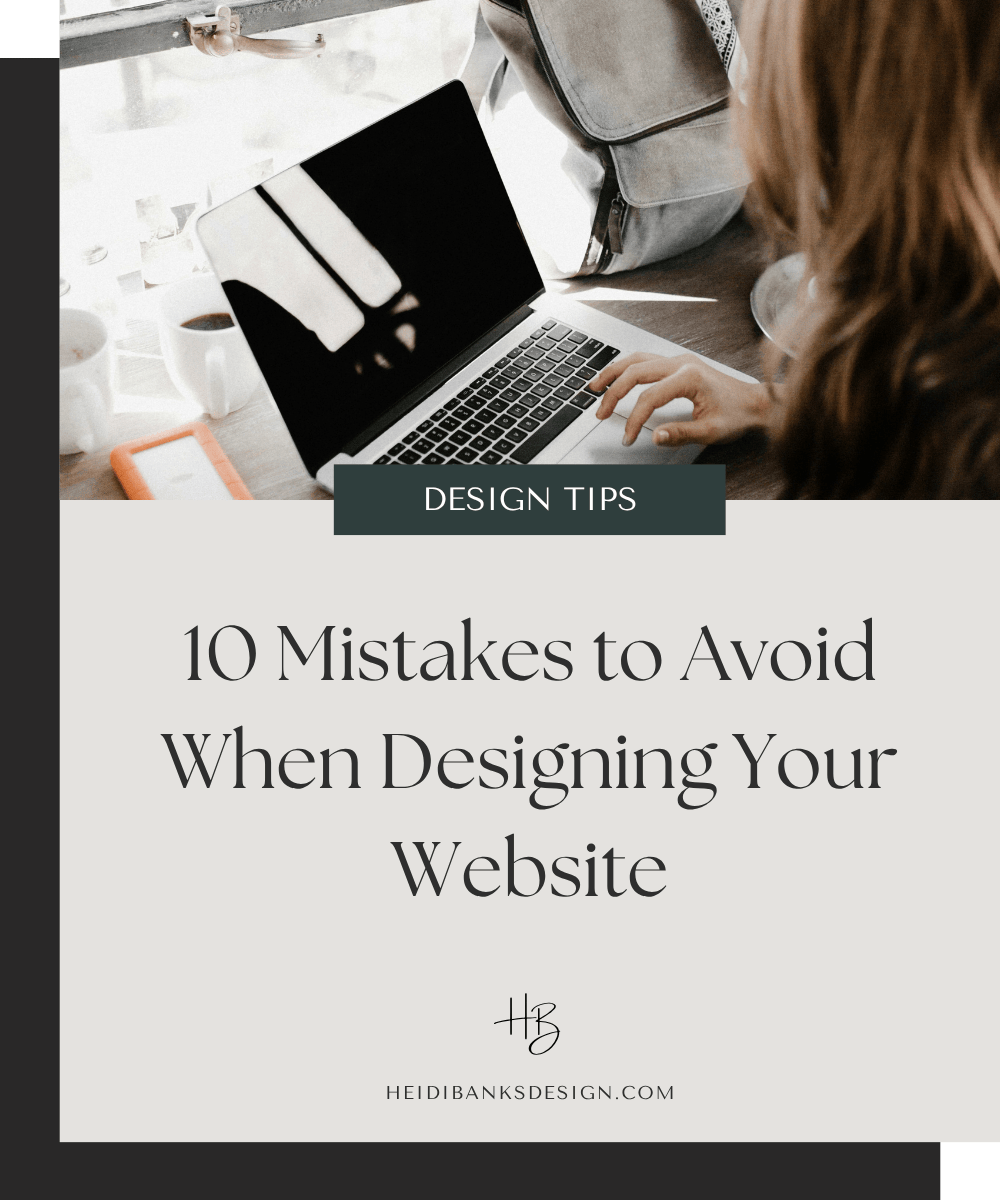10 Mistakes to Avoid When Designing Your Website
Avoid These Common Pitfalls to Build a Website That Connects and Converts
Your website is often the first interaction potential clients have with your brand—especially in the health and wellness space. A well-designed site builds trust, reflects your values, and guides visitors to take action. But even with the best intentions, many entrepreneurs unknowingly make design mistakes that weaken their online presence.
The good news? Most website missteps are easy to fix once you know what to look for. In this post, I’ll walk you through 10 of the most common design mistakes and how to avoid them, so your site can shine and truly support your business goals.
1. No Clear Call to Action
Without a clear call to action (CTA), visitors are left wondering what to do next. Should they book a session? Download your free guide? Join your newsletter? A website without direction can lead to missed opportunities.
Make sure every page includes a CTA that guides your audience toward the next step in their journey with you. Use clear, specific language like “Book a Free Consultation,” “Get Your Free Checklist,” or “Start Here.”
Your CTA should be easy to find and feel like a natural next step—not pushy, but inviting.
2. Cluttered or Overwhelming Layout
When there’s too much going on visually—too many fonts, colors, or competing elements—visitors can feel overwhelmed and unsure where to look. A cluttered site can also feel unprofessional and untrustworthy.
Use whitespace to give your content room to breathe. Organize sections with clear headings and follow a consistent layout style. Visual hierarchy helps guide your reader’s eyes to what matters most.
Less is more. Make it easy for people to absorb your message quickly.
3. Ignoring Mobile Users
More than half of web traffic comes from mobile devices, so if your site isn’t mobile-optimized, you’re losing potential clients. Poor formatting, tiny text, or hard-to-click buttons can lead to frustration and fast exits.
Make sure your website uses a responsive design that adapts smoothly to different screen sizes. Test it on your own phone and tablet to see how it looks and feels.
Prioritize simplicity and speed—especially for mobile users who are on the go.
4. Using Low-Quality or Generic Images
Visuals create a first impression faster than words. If your site is filled with blurry, outdated, or overly generic stock photos, it can send the wrong message about your brand.
Invest in brand photography if possible, or choose high-quality, relevant stock images from platforms like Unsplash. Your photos should feel aligned with your message—authentic, calming, and professional.
Your visuals should reinforce your brand, not distract from it.
5. Lack of Brand Consistency
Inconsistent fonts, colors, or messaging confuse your audience and make your site feel disjointed. A clear, consistent brand experience builds trust and makes your business feel more established.
Choose 1–2 fonts, a defined color palette, and stick with them across your site. Use consistent tone and language, too, so your brand voice is clear from page to page.
Create a mini brand style guide—even if it’s just for yourself—to stay on track.
6. Hard-to-Find Contact Info
If a potential client wants to reach out but can’t find your contact info, that’s a missed opportunity. Your contact details should always be just a click away.
Include a clear Contact page with your email, phone number (if applicable), and social media links. Also, add contact options to your footer or navigation menu for easy access.
Bonus points if you include a simple contact form and/or a scheduling link.
7. Slow Loading Speed
Slow websites don’t just frustrate visitors—they also hurt your search rankings. If your site takes more than a few seconds to load, people are likely to bounce.
Optimize your images before uploading them, choose a reliable hosting provider, and minimize the number of plugins you use. Test your site speed with tools like Google PageSpeed Insights.
Speed matters—especially in today’s fast-scrolling world.
8. Not Telling Your Story
People connect with people. If your About page is an afterthought—or worse, missing—you’re skipping a chance to form a real connection.
Share your story, your values, and why you do what you do. Make it human and heartfelt. A warm photo of you can go a long way in building trust and approachability.
Your story makes your brand memorable. Don’t be afraid to let people in.
9. No Testimonials or Social Proof
Social proof builds trust. If your site doesn’t include any reviews, testimonials, or success stories, potential clients may hesitate to take the next step.
Add a few kind words from past clients, even if you’re just starting out. A simple quote with a name and photo (with permission) adds credibility.
Consider including before-and-after stories, client results, or even screenshots from happy messages.
10. Confusing Navigation
If visitors can’t find what they need in the first few seconds, they’ll probably leave. Your site should be easy to navigate with clear menu options and intuitive structure.
Stick to 4–6 main menu items, use drop-downs wisely, and guide visitors toward key pages like Services, About, and Contact.
Think like your ideal client—what would they be looking for first?
Conclusion
A well-designed website doesn’t need to be complicated. When you avoid these common mistakes, you’ll create a site that not only looks good—but also feels good, works smoothly, and helps you attract and serve your ideal clients.
Think of your website as a living, evolving reflection of your business. You don’t have to get everything perfect right away, but the more intentional you are, the more confident you’ll feel about sending people there.
If you’re not sure where to start, use the checklist below—or reach out and I’d be happy to help.
Click here to download the “Website Design Checklist” to evaluate your website and see where you could make some improvements. Let’s make sure your site is doing what it’s meant to: growing your wellness business with clarity and ease!
